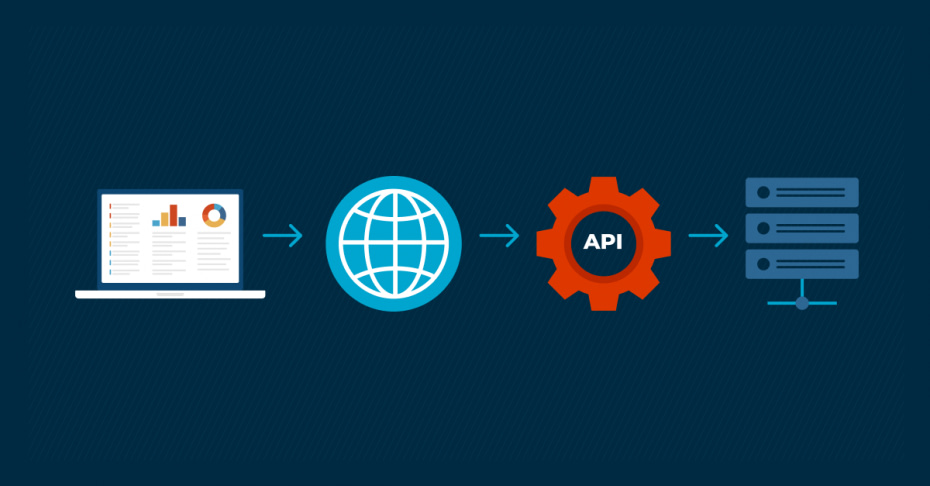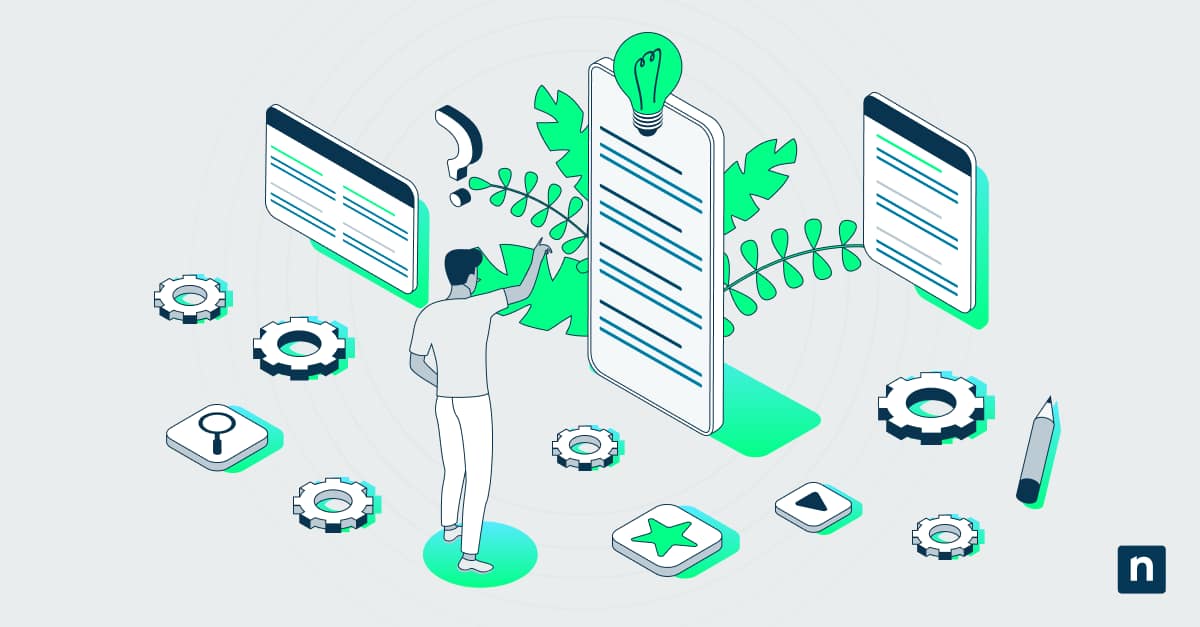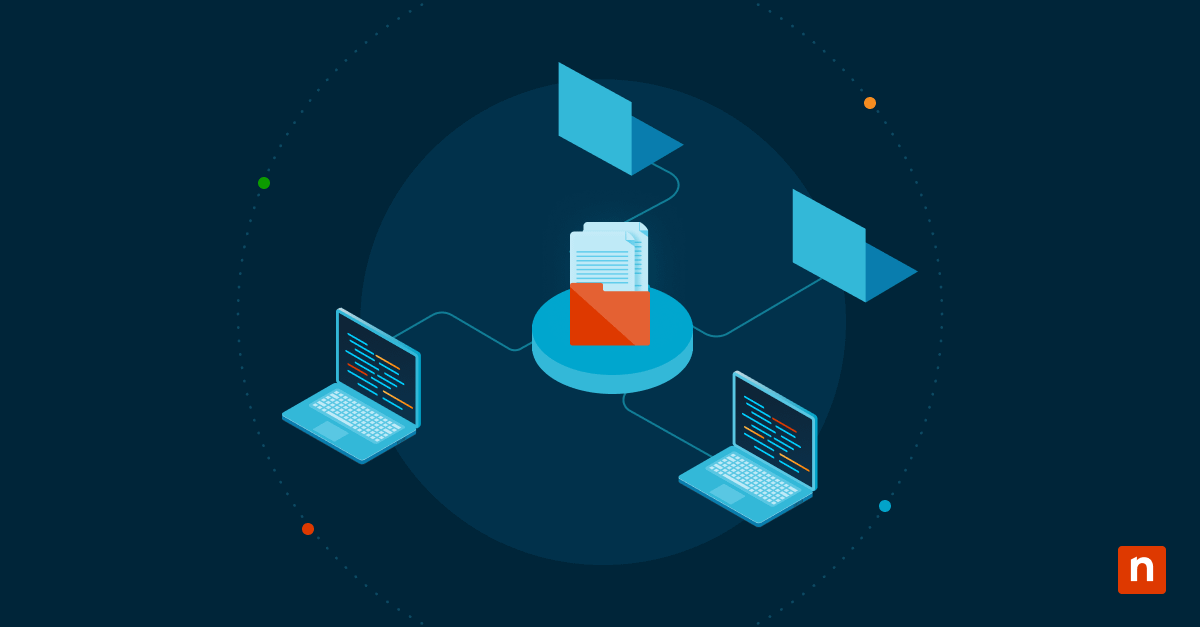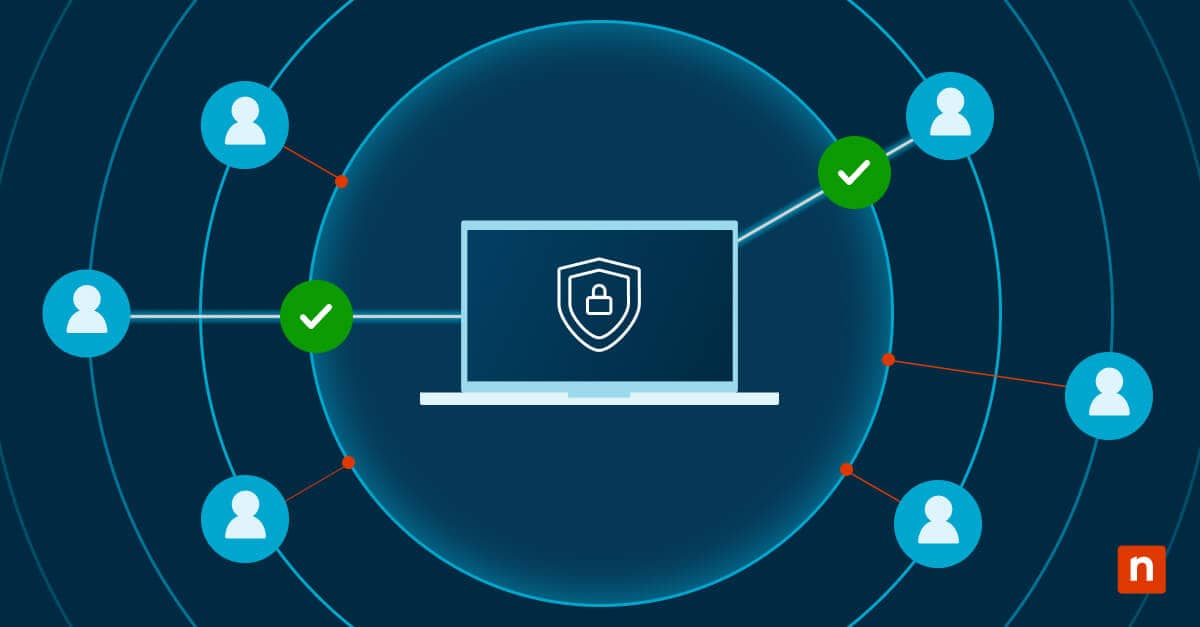Businesses in almost every industry use or have used an API endpoint at some point. APIs help organizations become more efficient and productive by supporting their digital transformation processes. This overview will define an API endpoint and provide some best practices for designing them.
🛑 Secure your APIs today and safeguard your organization from potential breaches with NinjaOne endpoint management.
What is an API endpoint?
Although APIs vs endpoints are two separate and different concepts, there is such a thing as an API endpoint. An API endpoint is a digital location, or point of entry, that an API uses to connect with a software program.
Essentially, an API endpoint is a URL that serves as a gateway between an API client and an API server. Each server delivers data and content to other devices over the Internet, and the API endpoint is the point of contact where requests by the API client are received.
How do API endpoints work?
An API endpoint provides a location for APIs to send requests for information and receive responses. There are two categories of APIs that endpoints often interact with, SOAP (Simple Object Access Protocol) and REST (Representational State Transfer). SOAP is a protocol that allows the exchange of information in XML format, and REST is a set of protocols that allows the exchange of information in URL format.
A well-designed API has intuitive endpoints that offer predictable ways for API clients to interact with the server’s resources. This makes it easier for developers to understand and use the API, leading to more efficient integration and reduced development time.
For example, a REST API endpoint may be accessed with the following HTTP methods:
- GET: This retrieves data from a specified resource. For example, GET http://api.example.com/users/1234 would retrieve the details of the user with ID 1234. Similarly, GET https://api.example.com/products?category=RMM would retrieve a full list of products under “RMM”
- PUT: This updates an existing resource. For example, PUT https://api.example.com/users/laurenb would update the information of the user LaurenB.
- HEAD: This is similar to GET but only returns the response’s headers without the accompanying body. For example, HEAD https://api.example.com/images/profile.jpg would check if the said image exists, and if it does, it would get only its size, content type, and other metadata.
- POST: This sends data to the server to create a new resource. For example, POST https://api.example.com/posts would create a new post and send the updated post content in the request body.
The API client assembles and sends these requests to the API server. Additionally, the request may include parameters and request components, such as:
- Parameters: These provide specific instructions for the API server to process.
- Request headers: These add extra information about the request
- Request body: Includes actual data required to create or update a resource.
Once you send a request to the appropriate endpoint, the API server then authenticates and validates the specified action. Each response typically includes a status code that indicates the result of the request.
What are API endpoint examples?
Some general REST API endpoint examples include retrieving user information (GET /user/{user_id}) and updating a product (PUT /product/{product_id}). More specific REST API endpoint examples include asking an API server about the weather of a specific city (GET /weather?city={city_name}) and looking at posts on a social media site (GET /posts/{post_id}/comments).
As you can see, API endpoint examples are limited only by your imagination. There are many types of API endpoints that you can make and utilize. That said, it’s worth noting that the specific structure and parameters of an API endpoint can vary based on the API provider and its documentation.
Why use API endpoints?
Businesses gain multiple advantages by using APIs and API endpoints. By connecting two software programs without the need for creation or interference from developers, APIs encourage and support IT automation, efficiency, innovation, and integration. In addition, APIs help businesses save costs since they do not need to develop applications themselves. They can simply rely on the API to provide the necessary features of an app.
Here are some additional benefits of using API endpoints:
- Enhanced connectivity and integration: Because API endpoints bridge different software systems, they enable MSPs and businesses to easily integrate various applications and services. This improves overall operational efficiency and functionality.
- Increased automation: Automating API endpoints can reduce manual labor, streamline workflows, and minimize human error. This frees your IT team to focus on more strategic projects.
- Improved data accessibility: API endpoints provide a more structured way to access and exchange data, which helps developers work with and analyze information from different sources.
4 examples of API endpoint authorization methods
-
API key
An API key is a string of characters only an API and its users know. A user must enter the key to receive information from the API and endpoint.
-
TLS
TLS, or Transport Layer Security, is a protocol that authenticates the connection between a server and user, or in this case, both applications from the API.
-
OAuth protocol
OAuth is a security protocol that uses tokens to authenticate and authorize users to access an API. It’s usually used for REST API endpoints, and it reduces the need to provide (and risk revealing) authorization data, such as confidential passwords.
-
User credentials
APIs can use basic user credentials, such as usernames and passwords, that users set up with the API service. However, user credentials alone are usually not enough to secure an API.
Best practices for designing API endpoints
The following best practices can help you design and maintain secure and reliable API endpoints.
- Ensure clear and consistent naming: When designing an API endpoint, make sure that the names accurately reflect the purpose of the endpoint. Equally important, you should take extra measures to maintain consistency throughout your API to improve readability and maintainability.
- Design an intuitive URL structure: Adhere to RESTful conventions for URL structure, such as using nouns for resources and HTTP methods for actions. This helps developers and users know what each command is for. Some examples include PUT for updating, GET for retrieving, and DELETE for deleting. Also, consider setting clear path parameters for better organization and readability.
- Use proper HTTP methods: It’s wise to follow proper HTTP semantics to guarantee that an API endpoint adheres to correct HTTP methods based on the intended action. For example, the convention GET should not be used for updating, and PUT should not be used for retrieving, etc.
- Provide clear documentation: It is crucial that all API endpoint requests and response structures, including data types, are properly recorded and documented for transparency. Similarly, you may want to implement pagination and filtering for larger datasets.
For a visual walkthrough, a video guide on “What Is An API Endpoint?” is available.
Gain increased visibility and control over all your endpoints with NinjaOne’s robust endpoint management software solution.
Manage endpoints with NinjaOne’s API
At NinjaOne, we provide our own Ninja API that our clients can use anytime. If you are a NinjaOne client with all your endpoint devices enrolled in Ninja, you can monitor and manage them via API in a third-party application. Essentially, anything you do in the NinjaOne tool you can also do via the API. To learn more about NinjaOne and how our endpoint monitoring and management solutions help you secure your IT environment, start a free trial today.







